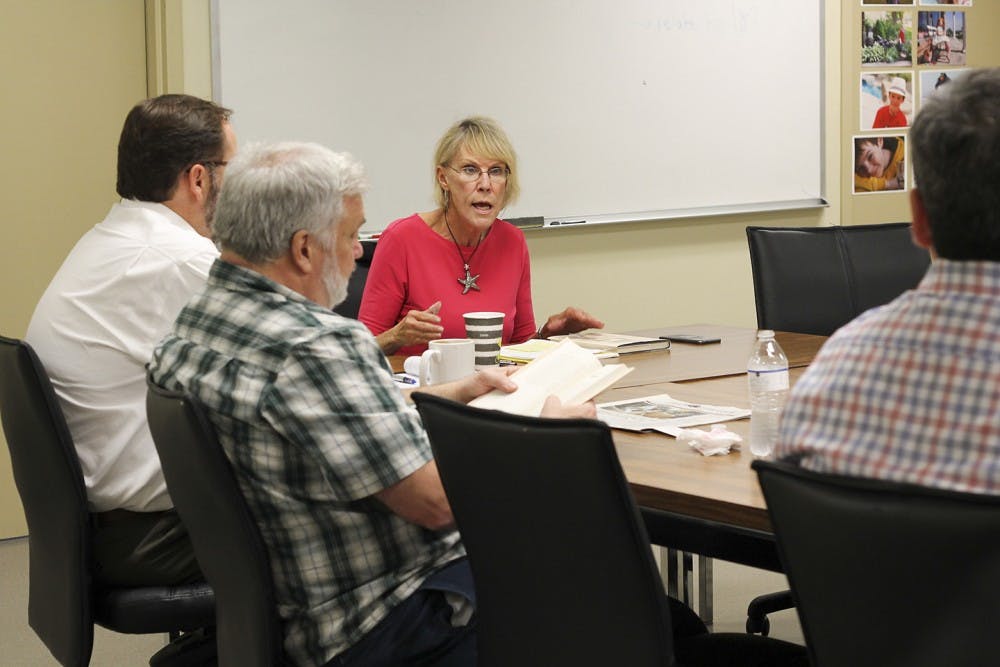While mostly unaware of his existence, students around USC have former professor Richard Greener to thank for a good portion of how the university operates today. Due to this, a committee has finished the process of publicizing his legacy with both a book and a soon-to-come statue of him.
This process began back in 2012, when the trunk of Greener, the first African American professor at USC, was found in the attic of a condemned building in Chicago. He taught from 1873 to 1877.
Upon its discovery, now-retired USC education professor Katherine Chaddock proposed her book "Uncompromising Activist: Richard Greener, First Black Graduate of Harvard College" to Harvard Press and Johns Hopkins University Press.
"I thought it was interesting that Harvard Press passed it up," Chaddock said. "I was thrilled that Johns Hopkins University press wanted to do it because I'm a historian and they're the oldest university press in the country."
Following her initial proposal, Chaddock was approached by multiple students and faculty members who presented her with an idea. In order to publicize Greener's legacy, they wanted to make an ad hoc committee in a grassroots attempt to give him some form of credit on campus.
"We had our first meeting ... and immediately some people started saying, 'Well yeah, let's put up a statue,'" said Christian K. Anderson, professor of higher education and co-chair of the Richard Greener Committee.
Over the next seven years, the ad hoc committee spent extensive time talking to key figures at USC including President Harris Pastides, who Anderson said has been very supportive throughout this process, as well as many members of the Board of Trustees.
As of fall 2017, the committee has achieved their goal of commemorating Greener's accomplishments, by creating a one-and-a-half scale statue which will be unveiled next to the Thomas Cooper Library early next semester.
"We had an ideas competition where people submitted ideas of what we could do and the idea of a statue ended up winning," Anderson said. "And here we are, its going to go up sometime next semester, hopefully in January or at the latest February."
Alongside her work with the committee, Chaddock was also working on her book covering Greener's entire life. It details many of his achievements, such as being the first African American Harvard graduate and his time as a consul to Vladivostok, Russia.
"I think his greatest accomplishment was to be able to demonstrate, to both African Americans and whites what one determined, smart and energetic African American could do," Chaddock said. "I think that served to motivate African Americans coming after him, and it certainly served the white people around him."
Greener was also very involved with USC, and Chaddock believes that he helped broaden the inclusiveness of the university as a whole. She believes that this is due to multiple grants and scholarships that he proposed during the reconstruction of Columbia.
"[He] certainly again demonstrated that we didn't need to be a college for rich white boys who had been well-tutored at home," Chaddock said. "Those scholarships, which all went to very poor kids ... sort of changed the college."
Chaddock accredits his success to his intelligence and energy, but also his desire to get involved.
"He went out of his way to make sure he was involved" Chaddock said. "I guess he had a huge amount of energy. Having the brainpower helped, but having the energy and the desire to [say] 'I'm going to make this happen.'"
Chaddock believes that Richard Greener's legacy serves not only as a motivator to the people of the Jim Crow era, but also as an example for people today.
"He really, I think, points out to us that you can do terrific things that sound terrific ... but if you're not taking action on something you believe in while you're doing those things ... then what difference does it make," Chaddock said. "His greatness was in actually using those as platforms for action. I think everybody should be doing that."

